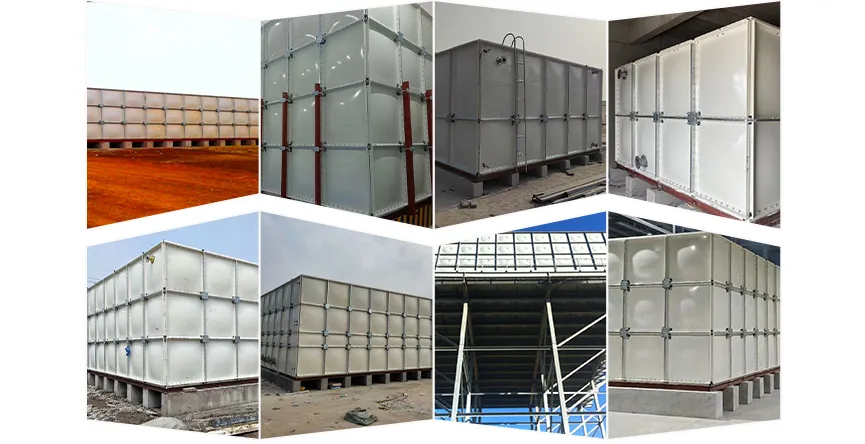loading...
- No. 9, Xingyuan South Street, Dongwaihuan Road, Zaoqiang County, Hengshui, Hebei, China
- admin@zjcomposites.com
- +86 15097380338
- Welcome to visit our website!
The Role of FRP Bars in Enhancing Concrete Structural Performance and Durability
The Role of FRP Bars in Reinforced Concrete Structures
Fiber-Reinforced Polymer (FRP) bars have emerged as a revolutionary alternative to traditional steel reinforcement in concrete construction. With advancements in materials science and engineering, FRP bars are increasingly recognized for their incredible mechanical properties, durability, and resistance to environmental factors. This article explores the benefits, applications, and considerations surrounding the use of FRP bars in concrete structures.
Understanding FRP Bars
FRP bars are composed of high-strength fibers (such as glass, carbon, or aramid) combined with a polymer resin. This composite material exhibits several advantages over steel, notably its high tensile strength, lightweight nature, and immunity to corrosion. These properties make FRP bars particularly well-suited for use in various construction projects, especially those exposed to harsh environments where corrosion may significantly compromise the integrity of traditional steel reinforcements.
Advantages of FRP Bars
1. Corrosion Resistance One of the most significant advantages of FRP bars is their resistance to corrosion. Unlike steel, which can degrade over time due to chemicals and moisture (especially in marine or de-icing salt environments), FRP remains unaffected. This longevity translates into lower maintenance costs and longer service life for structures.
2. Lightweight FRP bars are significantly lighter than steel, making them easier to handle and install on construction sites. This reduces logistical challenges and can lead to savings in transportation and labor costs during construction.
3. High Strength-to-Weight Ratio The impressive strength-to-weight ratio of FRP bars allows for the use of lesser quantities of material without compromising structural integrity. This property is particularly beneficial in applications where weight is a critical factor, such as in bridge construction or retrofitting existing structures.
4. Non-Magnetic and Non-Conductive For applications in sensitive environments (such as hospitals or laboratories) or where electrical conductivity is a concern, FRP bars present a considerable advantage. Their non-magnetic and non-conductive nature helps maintain the integrity of sensitive instruments and processes.
5. Design Flexibility FRP bars can be manufactured in a variety of shapes, sizes, and colors. This design flexibility allows architects and engineers to integrate them seamlessly into modern architectural designs, enhancing aesthetics without sacrificing performance.
frp bars in concrete

Applications of FRP Bars
The unique properties of FRP bars make them suitable for a broad range of applications
- Bridges Given their light weight and strength, FRP bars can be particularly advantageous in bridge construction, where reduced dead load and enhanced durability are critical.
- Parking Structures FRP reinforcement can provide extended durability in parking structures that are exposed to chemicals and moisture from de-icing salts, reducing maintenance costs over time.
- Marine Structures In coastal and underwater applications, such as piers, seawalls, and wharves, FRP bars resist the harsh effects of salty environments, making them ideal for long-lasting performance.
- Retrofitting Existing structures can be retrofitted with FRP bars to improve their load-bearing capacity or to resist the effects of aging and corrosion.
Considerations and Challenges
Despite their many advantages, the adoption of FRP bars in concrete structures also presents certain challenges. The initial cost of FRP materials can be higher than that of traditional steel. Additionally, the overall understanding and acceptance of FRP technology among construction professionals is still developing, which may hinder widespread implementation. Proper design methodologies and guidelines are essential for optimizing performance and ensuring reliability.
In conclusion, FRP bars represent an innovative solution to many of the challenges in modern concrete construction. Their corrosion resistance, lightweight nature, and strength open up new possibilities for design and application, particularly in environments where traditional materials may fail. As the construction industry continues to explore and expand the use of composite materials, FRP bars may well become a standard in reinforced concrete, paving the way for safer, more sustainable structures. The future of construction could very well be framed with these advanced materials at its core, improving resilience and longevity in the built environment.
-
Transform Your Spaces with FRP Grating SolutionsNewsNov.04,2024
-
The Versatility and Strength of FRP RodsNewsNov.04,2024
-
The Excellence of Fiberglass Water TanksNewsNov.04,2024
-
The Benefits of FRP Grating for Your ProjectsNewsNov.04,2024
-
Elevate Your Efficiency with FRP Pressure VesselsNewsNov.04,2024
-
Welcome to the World of FRP Pressure VesselsNewsOct.12,2024
-
Unveiling the Future of Filtration: Why FRP Filter Vessels are a Game ChangerNewsOct.12,2024
